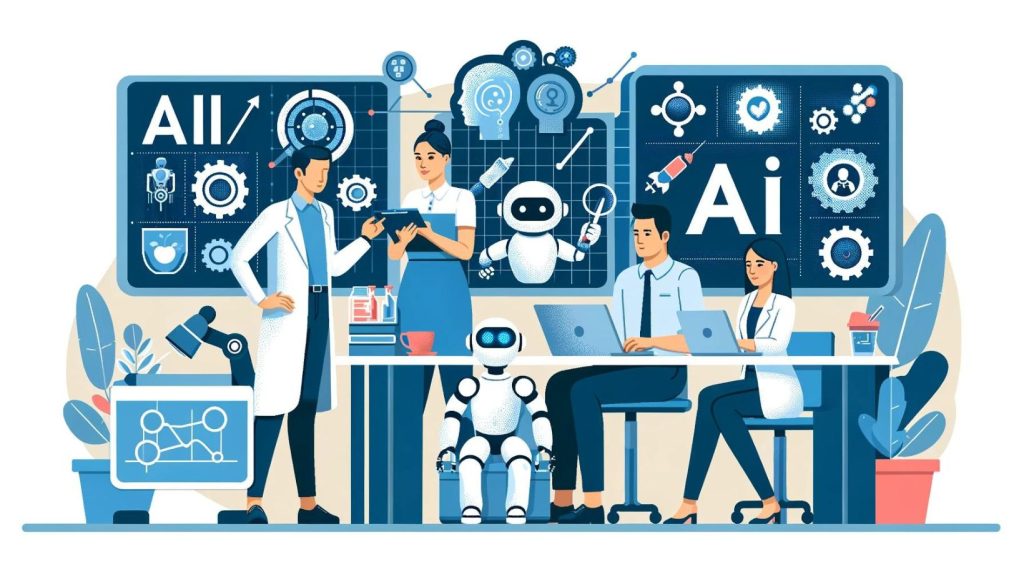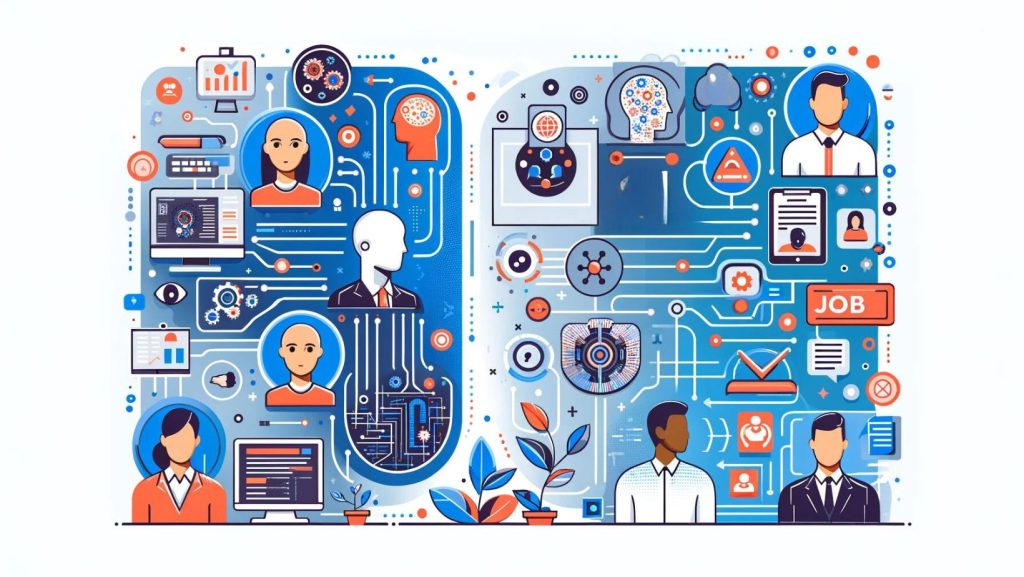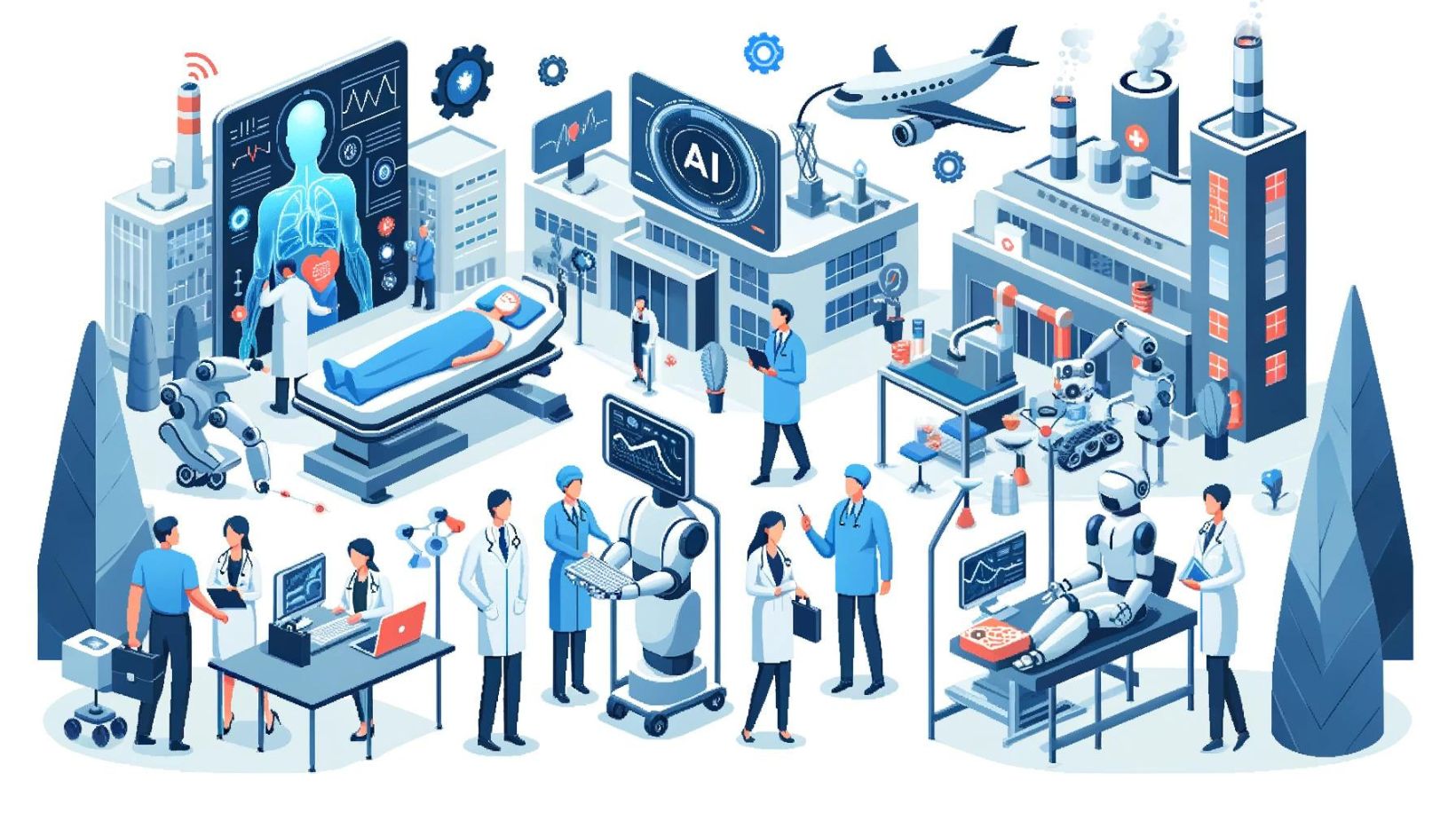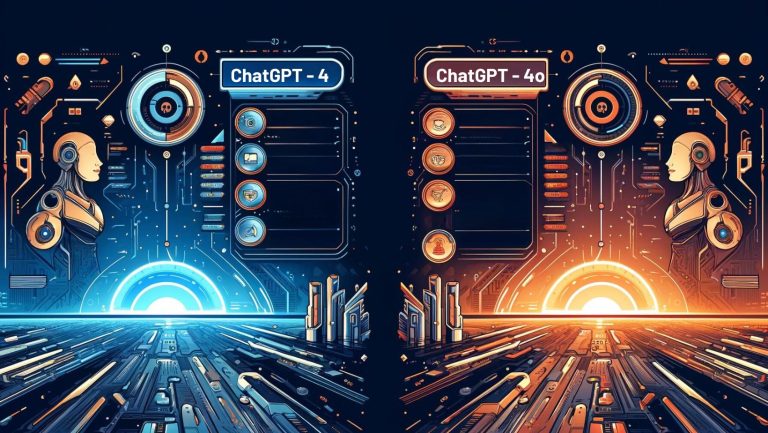AI and the Future of Work: Embracing Change
As I sit back and reflect on the rapid advancements in artificial intelligence (AI) and its profound impact on the world of work, I can’t help but feel a mix of excitement and trepidation. As the primary backer of our AI consulting arm, I’ve had the privilege of witnessing firsthand how this transformative technology is reshaping industries, redefining job roles, and unlocking new possibilities for businesses and individuals alike.
But I also understand that for many, the prospect of AI in the workplace can be daunting. Will it lead to widespread job losses? Will humans become obsolete? These are valid concerns, but I firmly believe that by approaching AI with the right mindset and strategies, we can harness its power to create a future of work that is more productive, fulfilling, and equitable for all.
Understanding the AI Landscape
Before we dive into the implications of AI for the future of work, let’s take a step back and define what we mean by AI. In essence, AI refers to the development of computer systems that can perform tasks that typically require human intelligence, such as visual perception, speech recognition, decision-making, and language translation.
Some of the key subfields of AI that are driving this transformation include:
- Machine Learning: Algorithms that enable computers to learn and improve from experience without being explicitly programmed.
- Natural Language Processing (NLP): The ability of computers to understand, interpret, and generate human language.
- Computer Vision: Enabling computers to interpret and understand visual information from the world around them.
These AI technologies are already being deployed across a wide range of industries, from healthcare and finance to manufacturing and transportation, leading to significant improvements in efficiency, accuracy, and innovation.

The Impact of AI on Job Opportunities
One of the most pressing questions surrounding AI is how it will impact job opportunities. The World Economic Forum’s Future of Jobs Report 2023 sheds light on the potential effects of AI and other technologies on the global job market over the next five years, from 2023 to 2027.
According to the report, we can expect a net decrease of 14 million jobs by 2027, which amounts to about 2% of the current employment landscape. This net decrease is the result of a structural job growth of 69 million jobs and a decline of 83 million jobs.
While the prospect of job displacement can be unsettling, it’s important to recognize that AI and other technologies will also create new job opportunities. As businesses adopt these technologies, there will be a growing demand for professionals with the skills to develop, manage, and work alongside AI systems.
Some of the new roles that may emerge include AI ethicists, who ensure the responsible development and deployment of AI systems; AI product managers, who oversee the creation and implementation of AI products and services; and AI-assisted healthcare technicians, who work alongside AI systems to provide enhanced patient care.
Moreover, AI has the potential to greatly enhance existing job roles by automating mundane tasks and allowing employees to focus on more strategic, creative, and value-adding work. I’ve seen firsthand how AI can help marketers optimize their campaigns, freeing up time for them to concentrate on crafting compelling brand narratives and building deeper customer relationships.
The World Economic Forum’s report underscores the significant impact that AI and other technologies will have on the job market, leading to both job creation and displacement. While the net effect is predicted to be a decrease in jobs, the report emphasizes the need for businesses, governments, and individuals to adapt to these changes through reskilling, upskilling, and embracing lifelong learning.
By understanding the findings from the World Economic Forum’s Future of Jobs Report 2023, we can better prepare for the evolving employment landscape and take proactive measures to mitigate potential job losses while capitalizing on new opportunities created by technological advancements. It’s crucial that we approach this transformation with a growth mindset, focusing on the potential for AI to augment and enhance our capabilities rather than simply replace us.
Cultivating the Skills of the Future
As AI transforms the job market, the skills that are most valuable to employers will also evolve. While technical skills related to AI development and implementation will undoubtedly be in high demand, I believe that soft skills will play an equally critical role in the AI-driven workforce.
Some of the most valuable skills to focus on include:
| Skill Category | Examples |
| Technical Skills | AI programming, data analysis, machine learning |
| Soft Skills | Critical thinking, problem-solving, creativity, emotional intelligence, adaptability |
| Domain Expertise | Industry-specific knowledge, understanding of AI applications within a particular field |
To stay competitive in the job market, it’s essential for professionals to prioritize continuous learning and upskilling. This can involve pursuing online courses, attending workshops and conferences, and actively seeking out opportunities to work on cross-functional projects that provide exposure to various aspects of AI implementation.
Integrating AI into the Workplace
For companies looking to leverage the power of AI, effectively integrating this technology into existing workflows is paramount. As an AI consultant, I’ve helped numerous organizations navigate this process, and I’ve identified several key steps that are essential for success:
- Identify Suitable Processes: Take a close look at your current workflows and pinpoint repetitive, time-consuming tasks that could be automated with AI.
- Set Clear Goals: Establish specific, measurable objectives for AI implementation to ensure alignment with your overall business strategy.
- Collaborate with Stakeholders: Engage employees, managers, and IT teams early on to gather input, address concerns, and foster buy-in.
- Provide Training and Support: Offer comprehensive training and ongoing support to help employees adapt to AI-enhanced workflows and feel confident in their ability to work alongside these technologies.
- Monitor and Optimize: Continuously monitor the performance of your AI systems, gather feedback from users, and make iterative improvements to optimize results.
By following these steps and maintaining open lines of communication throughout the process, companies can successfully integrate AI into their existing workflows, unlocking new efficiencies, boosting productivity, and gaining a competitive edge in their respective markets.

Navigating the Benefits and Challenges of AI
Like any transformative technology, AI brings with it both significant benefits and potential challenges that must be carefully navigated.
On the benefits side, AI has the potential to greatly increase efficiency, enhance decision-making, and free up human workers to focus on higher-value tasks. In industries like healthcare, AI is already being used to improve diagnostic accuracy, personalize treatment plans, and accelerate drug discovery. In manufacturing, AI-powered predictive maintenance is helping companies reduce downtime, optimize production processes, and improve overall equipment effectiveness.
However, there are also valid concerns around the potential drawbacks of AI in the workplace, such as:
- Job displacement and workforce disruption
- High upfront costs for AI implementation
- The need for ongoing maintenance and updates
- Ethical considerations around data privacy and algorithmic bias
To mitigate these challenges, I believe companies must develop clear AI strategies that are closely aligned with their broader business objectives. This includes investing in comprehensive employee training and upskilling programs, establishing robust ethical guidelines for AI use, and fostering a culture of continuous learning and adaptability.
One particularly promising approach is that of “augmented intelligence,” which emphasizes the collaborative potential of humans and machines working together to enhance our collective capabilities. By viewing AI as a tool to support and empower human workers, rather than a replacement for them, we can harness the benefits of this technology while minimizing its potential downsides.
Thriving in the AI-Driven Future of Work
For employees looking to thrive in the AI-driven future of work, adaptability and proactivity will be key. Here are a few strategies I recommend for navigating the changing job market:
- Embrace Lifelong Learning: Make continuous learning a priority by proactively seeking out opportunities to update your skills and knowledge through online courses, workshops, and certifications.
- Develop Transferable Skills: Focus on cultivating skills that can be applied across a wide range of industries and roles, such as problem-solving, critical thinking, and effective communication.
- Collaborate with AI: Rather than viewing AI as a threat, learn to work alongside these technologies to enhance your own productivity and value to employers.
- Explore New Opportunities: Stay open to new career paths and industries that may emerge as a result of AI advancements, and consider how your unique skills and experiences could be applied in these areas.
By proactively adapting to the changing job market and embracing the opportunities presented by AI, employees can position themselves for long-term success and fulfillment in their careers.
The Vital Role of Governments and Educational Institutions
As AI reshapes the workforce, governments and educational institutions have a critical role to play in supporting workers and preparing them for the jobs of the future.
On the government side, this can involve:
- Investing in AI research and development to drive innovation and economic growth
- Developing policies and regulations to ensure the ethical and responsible use of AI in the workplace
- Providing funding for workforce training and upskilling programs
- Collaborating with industries to identify and address emerging skills gaps
- Strengthening social safety nets to support workers affected by AI-driven job displacement
Meanwhile, educational institutions can make a significant impact by:
- Integrating AI and related technologies into curricula across a wide range of disciplines
- Offering specialized AI courses and degree programs to develop a pipeline of skilled AI professionals
- Fostering close partnerships with industry to provide students with real-world AI experience and exposure
- Prioritizing lifelong learning and continuous upskilling opportunities for adult learners
- Emphasizing the development of transferable skills, such as critical thinking and problem-solving, that will be essential in the AI-driven economy
By working together, governments and educational institutions can create a supportive ecosystem that empowers workers to thrive in the age of AI, ensuring a smooth transition and minimizing the potential negative impacts of this transformative technology.
Prioritizing Ethics in AI Implementation
As more and more companies adopt AI, it’s absolutely essential that we consider the ethical implications and establish clear guidelines for responsible AI development and deployment. Some of the key ethical considerations that must be addressed include:
- Data Privacy and Security: Ensuring that employee and customer data used for AI training and decision-making is collected, stored, and used in full compliance with relevant privacy regulations and best practices.
- Bias and Fairness: Regularly auditing AI systems for potential biases related to factors such as race, gender, or age, and taking proactive steps to mitigate any identified biases to ensure fair and equitable treatment of all employees and customers.
- Transparency and Explainability: Providing clear, understandable explanations of how AI systems arrive at their decisions and recommendations, and ensuring that there is adequate human oversight and the ability to intervene when necessary.
- Human Autonomy: Designing AI systems that augment and support human decision-making rather than replacing it entirely, preserving the autonomy and agency of human workers.
- Accountability and Liability: Establishing clear lines of accountability for AI-driven decisions and defining robust frameworks for addressing potential errors or harms caused by AI systems.
To effectively address these ethical considerations, I believe companies must develop comprehensive AI ethics guidelines, provide ongoing training for employees on responsible AI use, actively engage diverse stakeholders in AI development and decision-making processes, and implement regular monitoring and assessment protocols to ensure AI systems remain in alignment with ethical principles.
Celebrating Human Creativity and Emotional Intelligence
As AI becomes increasingly ubiquitous in the workplace, it’s more important than ever that we recognize and celebrate the unique value that human creativity and emotional intelligence bring to the table. While AI excels at processing vast amounts of data and automating routine tasks, it simply cannot match the human capacity for creative thinking, empathy, and navigating complex social situations.
Human creativity will remain essential for:
- Generating truly innovative ideas and solutions to complex, multifaceted problems
- Developing unique, engaging, and emotionally resonant content and experiences
- Challenging established norms and assumptions to drive breakthrough thinking
- Synthesizing disparate concepts and ideas to create entirely new products, services, and business models
Similarly, emotional intelligence will be a key differentiator in the AI-driven workplace, enabling professionals to:
- Build and maintain strong, trust-based relationships with colleagues, customers, and partners
- Demonstrate genuine empathy and understanding in interactions with others
- Effectively resolve conflicts and navigate complex interpersonal dynamics
- Provide nuanced, context-aware communication and decision-making that accounts for the subtleties of human emotion and behavior
To fully harness the power of human creativity and emotional intelligence in an AI-driven workplace, organizations must intentionally foster a culture that values and encourages these qualities. This can involve providing dedicated time and resources for creative exploration, offering targeted training and development programs focused on building emotional intelligence competencies and recognizing and rewarding employees who consistently demonstrate exceptional creativity and empathy in their work.
Embracing the AI-Powered Future
As we stand on the cusp of this new era of work, I believe it’s essential that we approach the integration of AI with a spirit of openness, adaptability, and continuous learning. By proactively embracing the opportunities presented by AI, we have the power to create a future of work that is not only more productive and efficient, but also more fulfilling and human-centered.
At Web Leveling, our mission is to help businesses and individuals navigate this transition with confidence and success. Whether you’re an executive looking to integrate AI into your operations, or an individual seeking to upskill for the AI economy, our team of expert consultants is here to provide tailored guidance and support every step of the way.
Ultimately, the key to thriving in the AI-powered future of work lies in our ability to approach this transformation as a collaborative endeavor. By working together across roles, organizations, and industries, and staying committed to lifelong learning and growth, we can harness the power of AI to build a brighter, more innovative future for all.
So, let’s embrace the change, seize the opportunities before us, and boldly step forward into this exciting new chapter for humanity and technology. The future is ours to create – and I, for one, can’t wait to see what we’ll achieve together.

Cal Hewitt is the Founder, CEO, and Project Lead at Web Leveling, a digital marketing agency empowering small and mid-sized businesses to thrive online. With over 27 years of experience in business analysis, management, consulting, and digital marketing, Cal brings a unique perspective to every project. He specializes in website design and development, AI consulting, social media marketing, and online reputation management. Cal’s hands-on leadership style and commitment to innovation ensure that Web Leveling stays at the forefront of digital marketing trends, delivering transformative results for clients.








